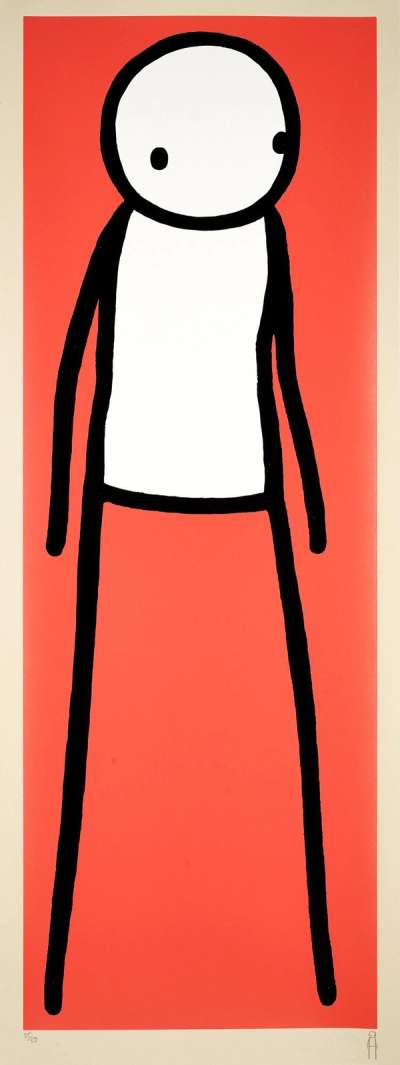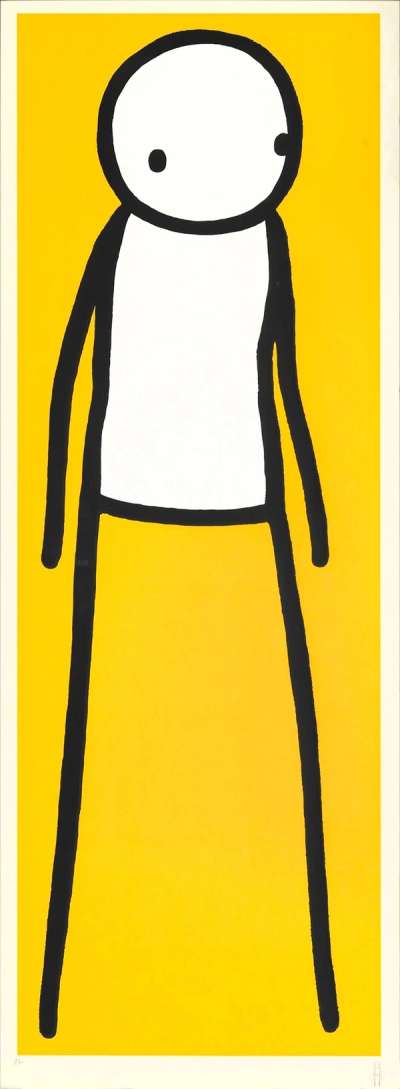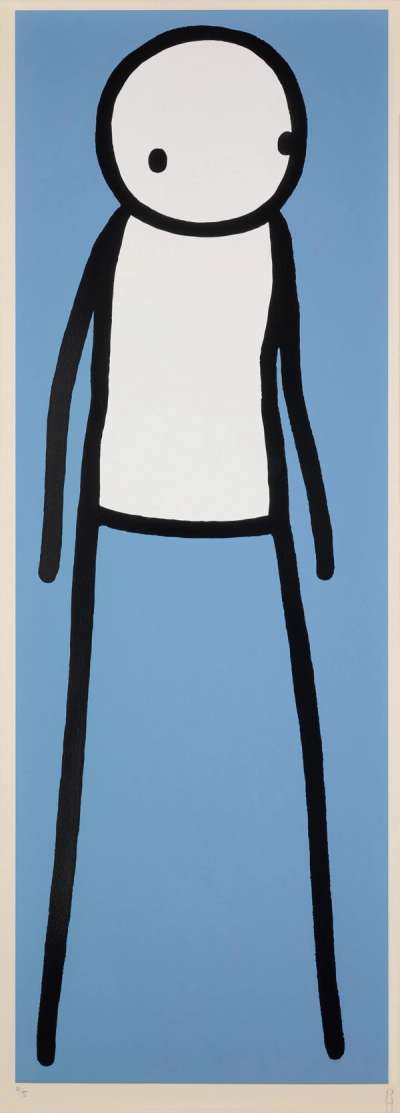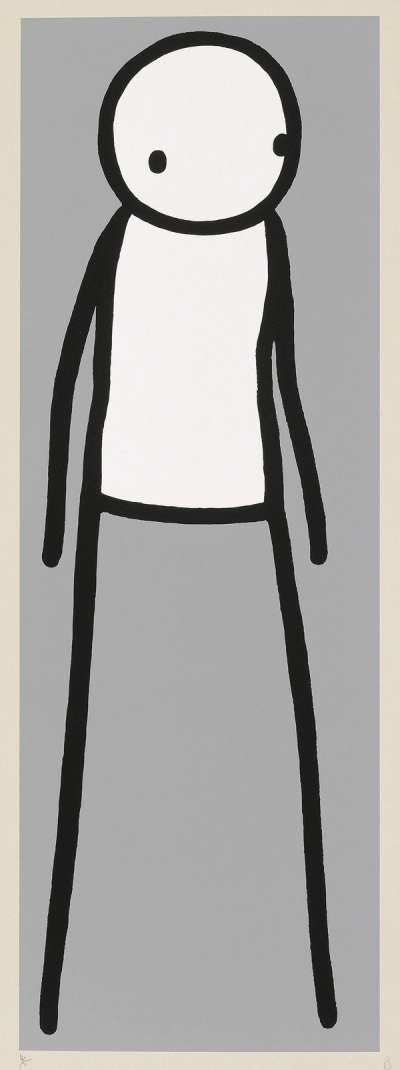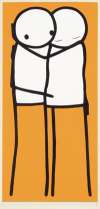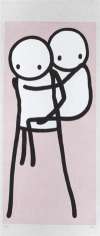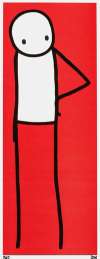Walk
Stik's Walk series shows his long-limbed stickman slightly off-kilter, looking ahead out of the frame. Ironically, the figure doesn't explicitly appear to be walking, but this speaks to Stik's nuanced artistry. The series explores the ephemerality of seeing in motion, evoking the fleeting glance taken in a city in motion.
Stik Walk For sale
Walk Market value
Auction Results
| Artwork | Auction Date | Auction House | Return to Seller | Hammer Price | Buyer Paid |
|---|---|---|---|---|---|
 Walk (red) Stik Signed Print | 3 Sept 2024 | Forum Auctions London | £8,075 | £9,500 | £12,000 |
 Walk (blue) Stik Signed Print | 14 Sept 2023 | Tate Ward Auctions | £14,450 | £17,000 | £23,000 |
 Walk (grey) Stik Signed Print | 21 Mar 2019 | Christie's London | £4,675 | £5,500 | £7,500 |
Sell Your Art
with Us
with Us
Join Our Network of Collectors. Buy, Sell and Track Demand
Meaning & Analysis
Deceptively simple at first glance, Stik’s Walk series captures how the stick-figure can raise many questions about movement and urban experience. The central motif of the series was first seen at an exhibition of the same name at the Imitate Modern gallery in London, featuring a range of canvas prints, sculptures and lightboxes.
Of the exhibition, STIK has remarked: 'This show is about movement, about moving forwards as a person, as an artist. I wanted to get that feeling of taking a step and being tentative, moving forward cautiously, but trying to think about where I’m going and what I’m taking with me'. The figure in the Walk prints is classic STIK: long-limbed, standing precariously, eyes looking directly to the side.
The irony of the image is perhaps in that the stickman is not obviously walking; there is the merest suggestion of movement. The clearest indication of motion is the steadfast gaze to the left, anticipating the figure’s forward steps. The title of the exhibition and this print series perhaps gestures towards the inherent movement of seeing - the spectator’s fleeting glance at the city in motion.
Not only can the series and exhibition be read as an exploration of one of the most important themes in STIK’s oeuvre, the experience of moving in urban space, but also an exploration of the evolution of the artist’s style through the years: an evolution which has been noted via dialogue with the city. ‘People have seen me through my artistic journey... People comment ‘oh I do my eyes differently’ or ‘the lines are a bit thicker' or ‘my colours have changed’, and it’s nice for people to have witnessed my development as an artist”. STIK’s style has evolved alongside the changing face of the city.
One particularly notable piece from the exhibition is a traffic lightbox with red and green lights, their glass surfaces graffitied with a standing and a moving stickman respectively. This is another instance of STIK taking the street into the art gallery, bringing the vibrancy, instability and harsh materials of the urban exterior into the tightly controlled, comfortable space of an exhibition. The juxtaposition of the ‘stop’ and ‘go’ figures materialises the inherent tension between stasis and movement captured in each of the artist’s stickmen.
